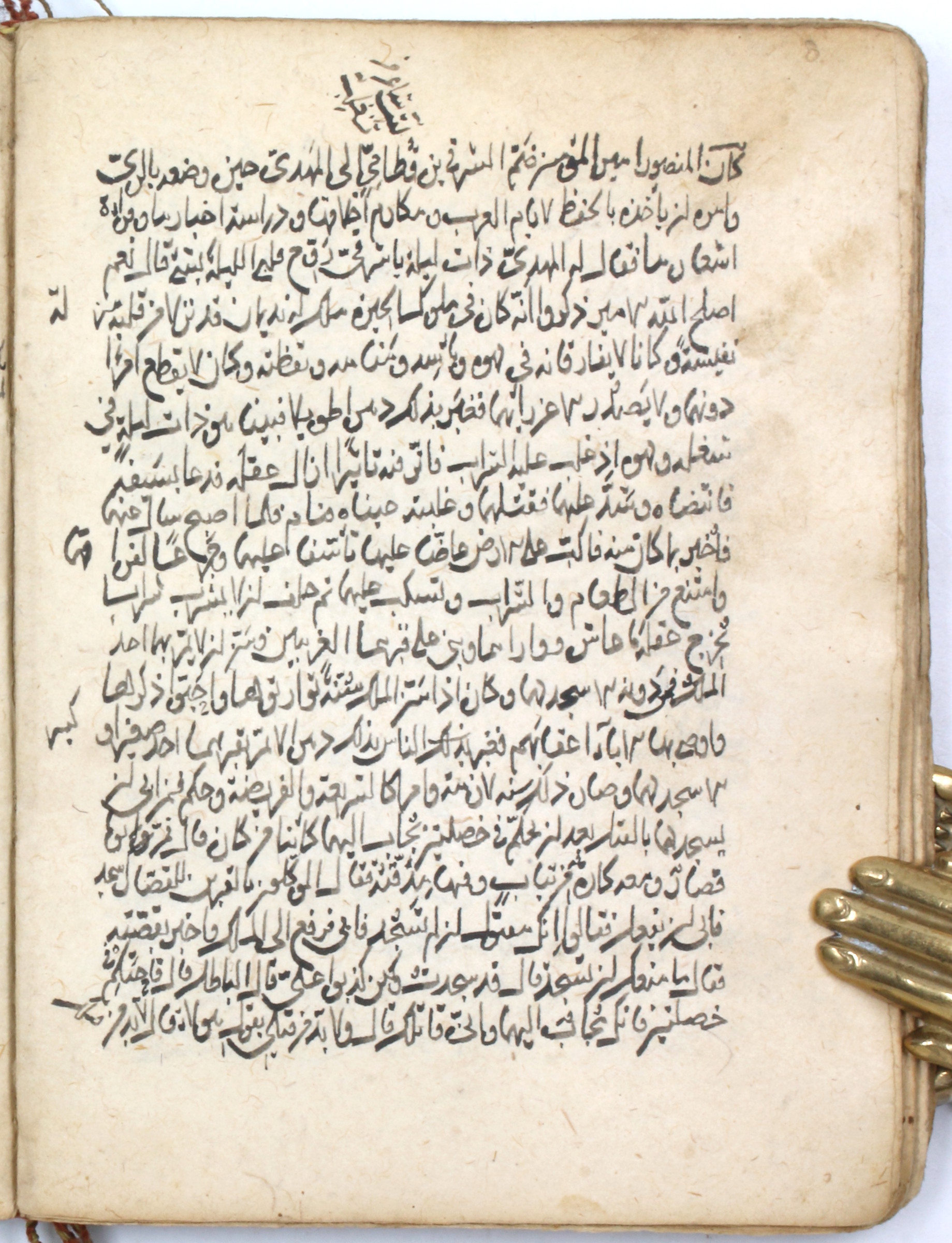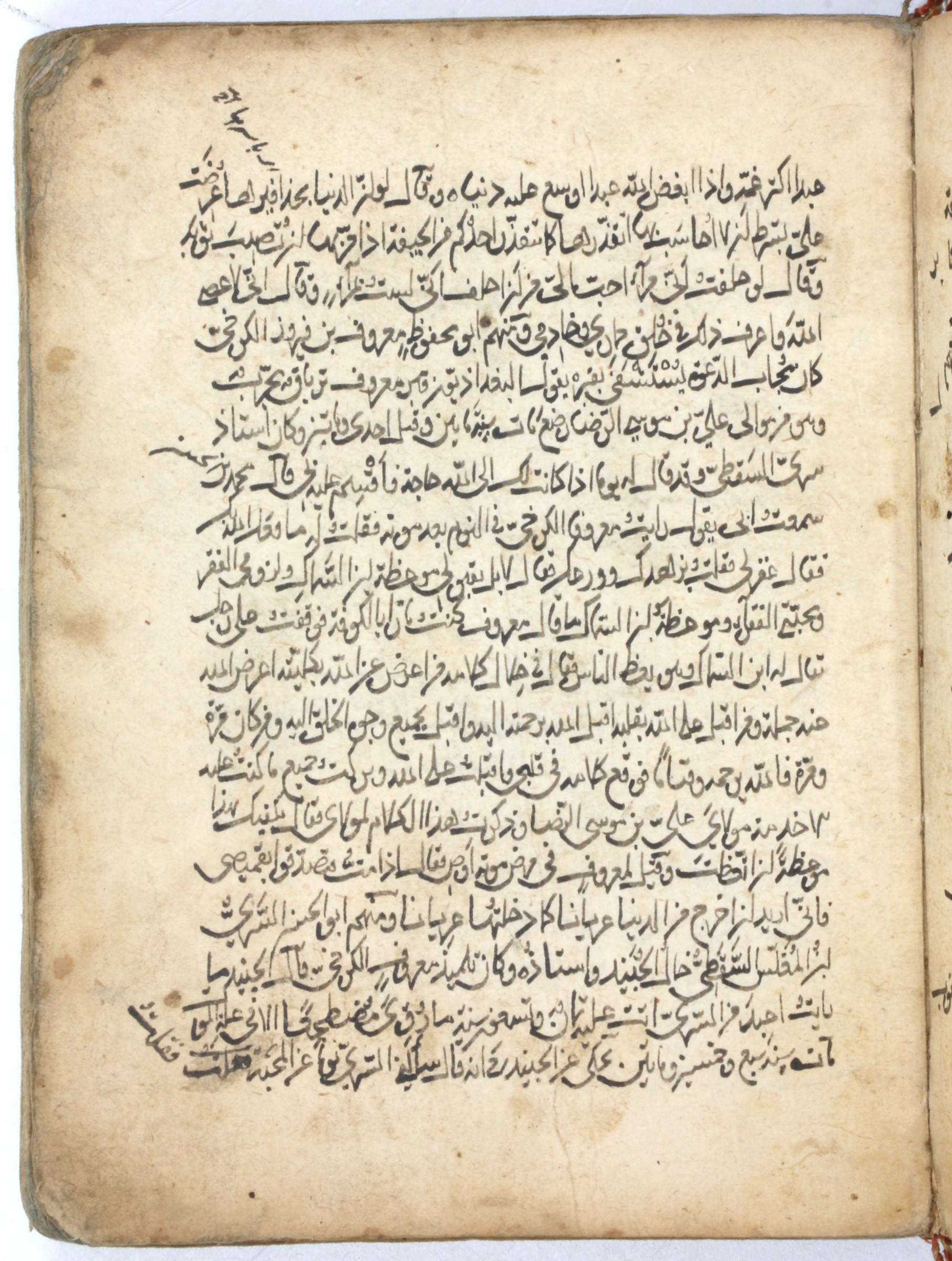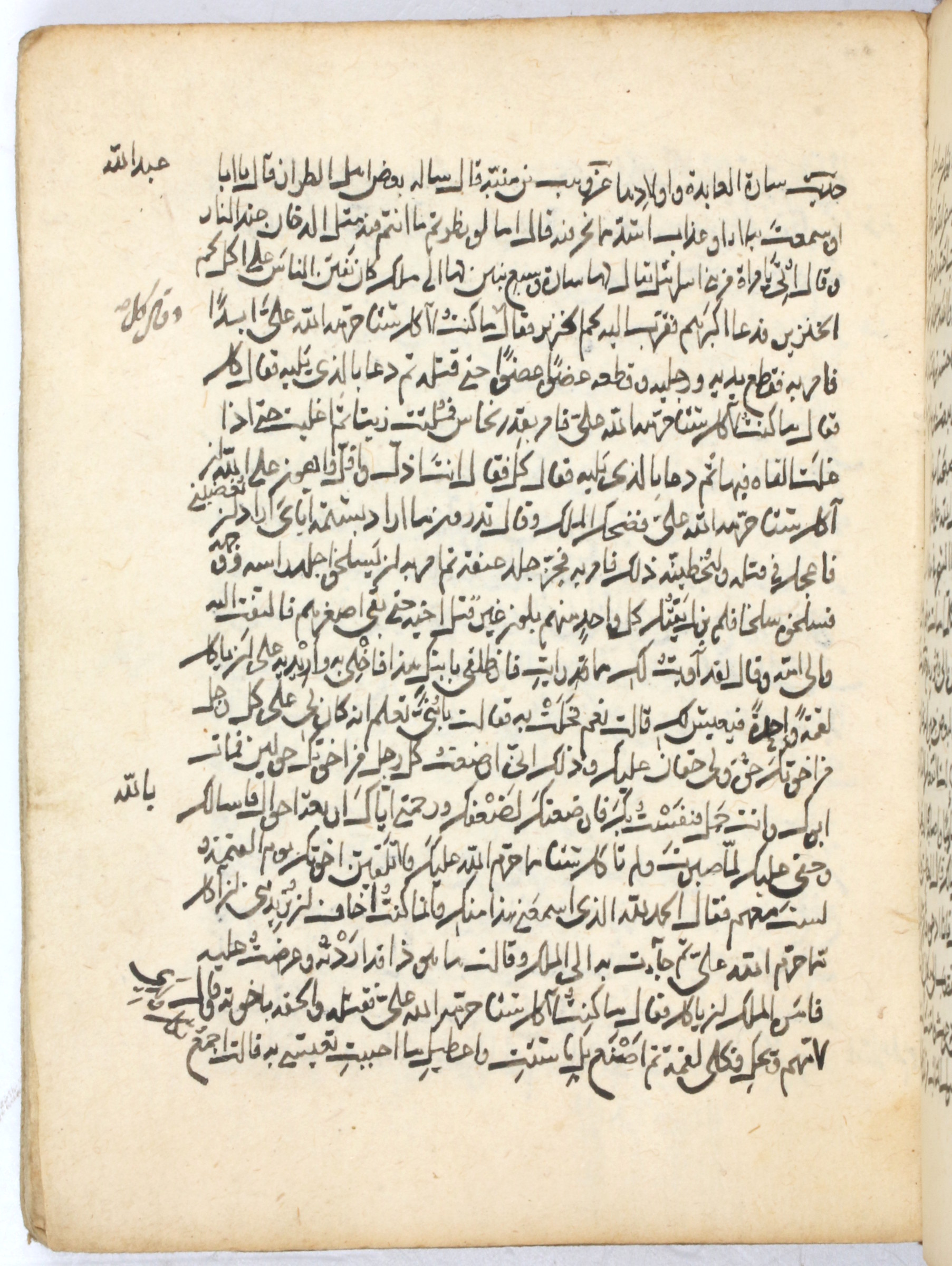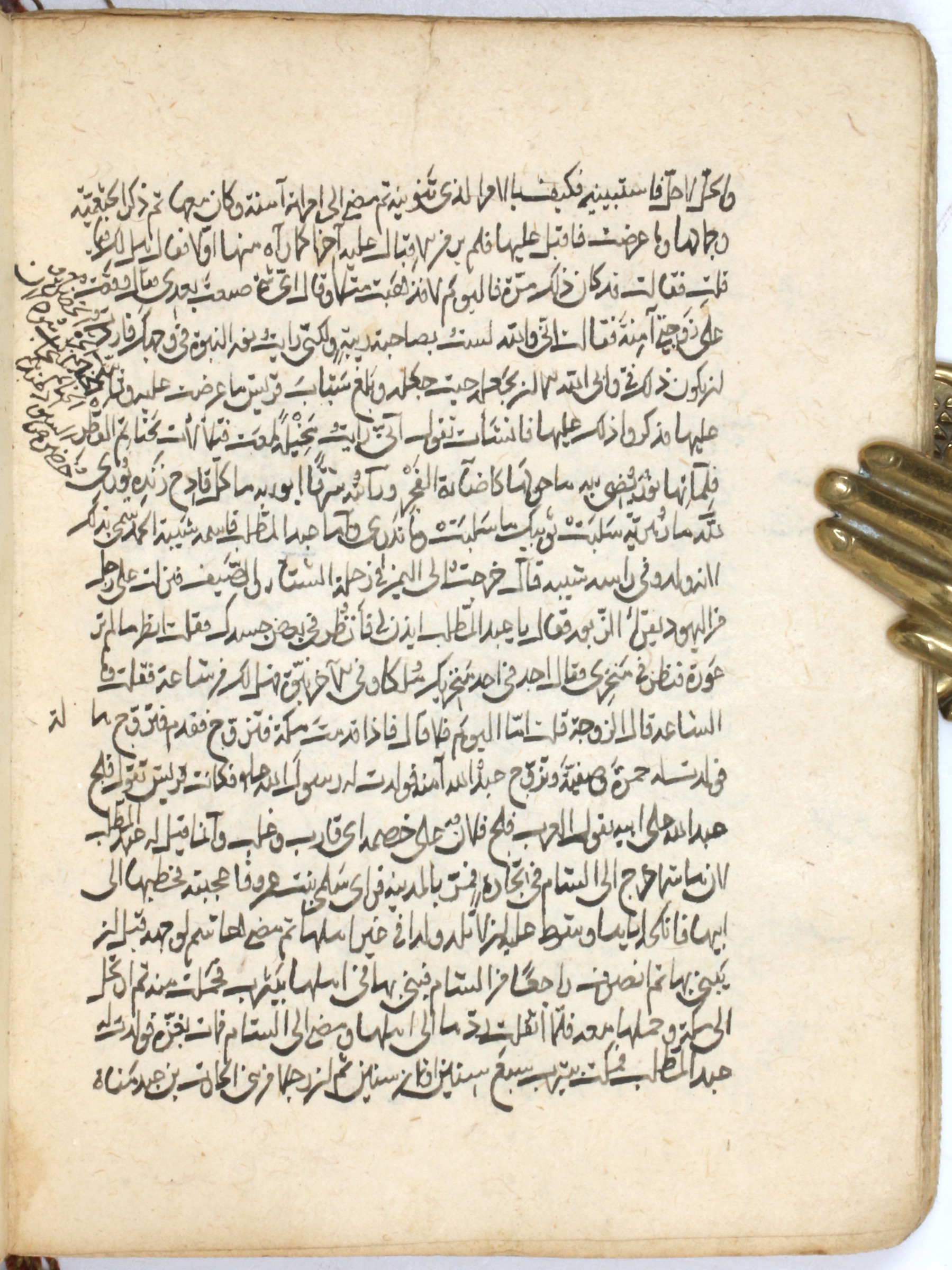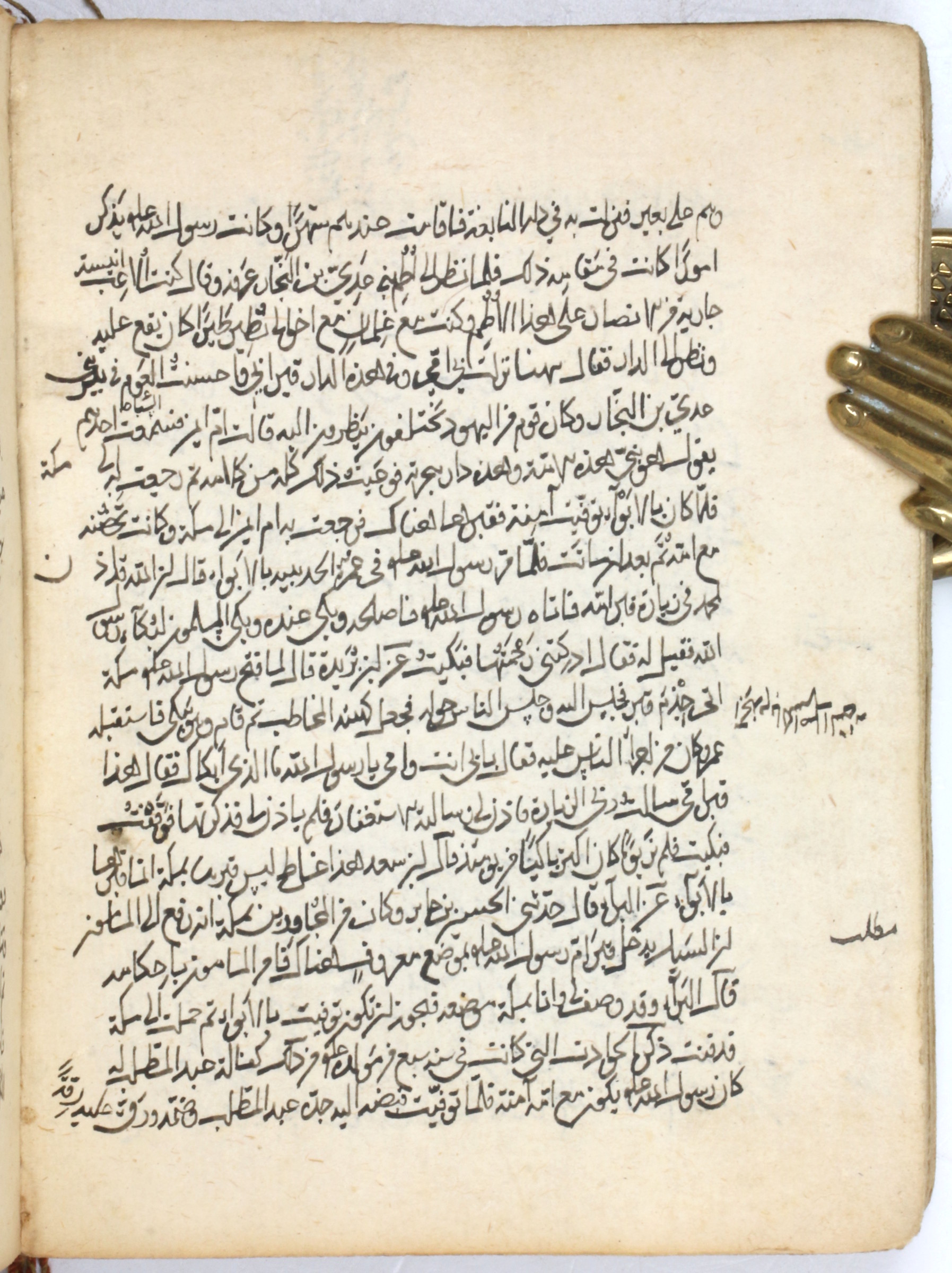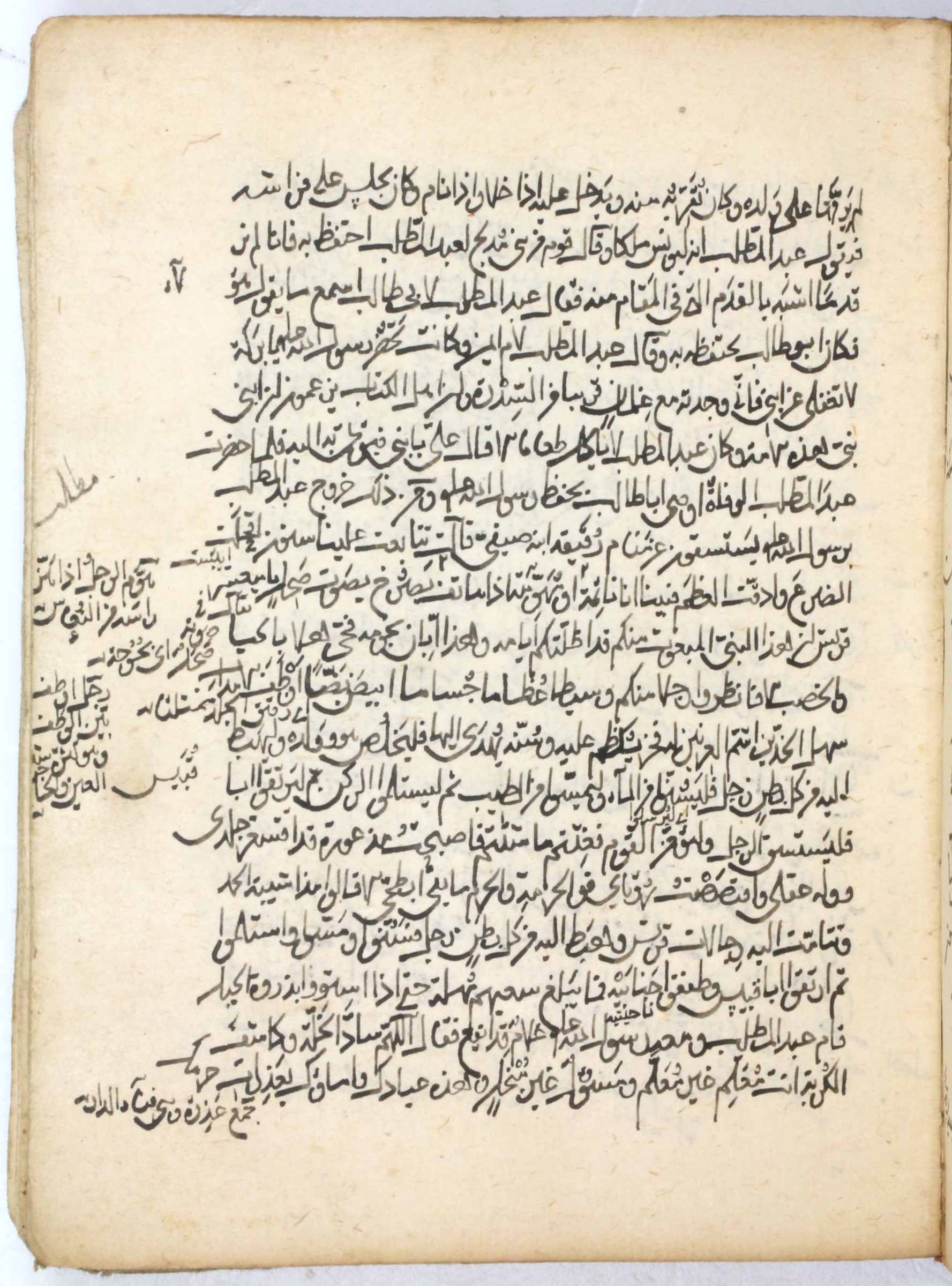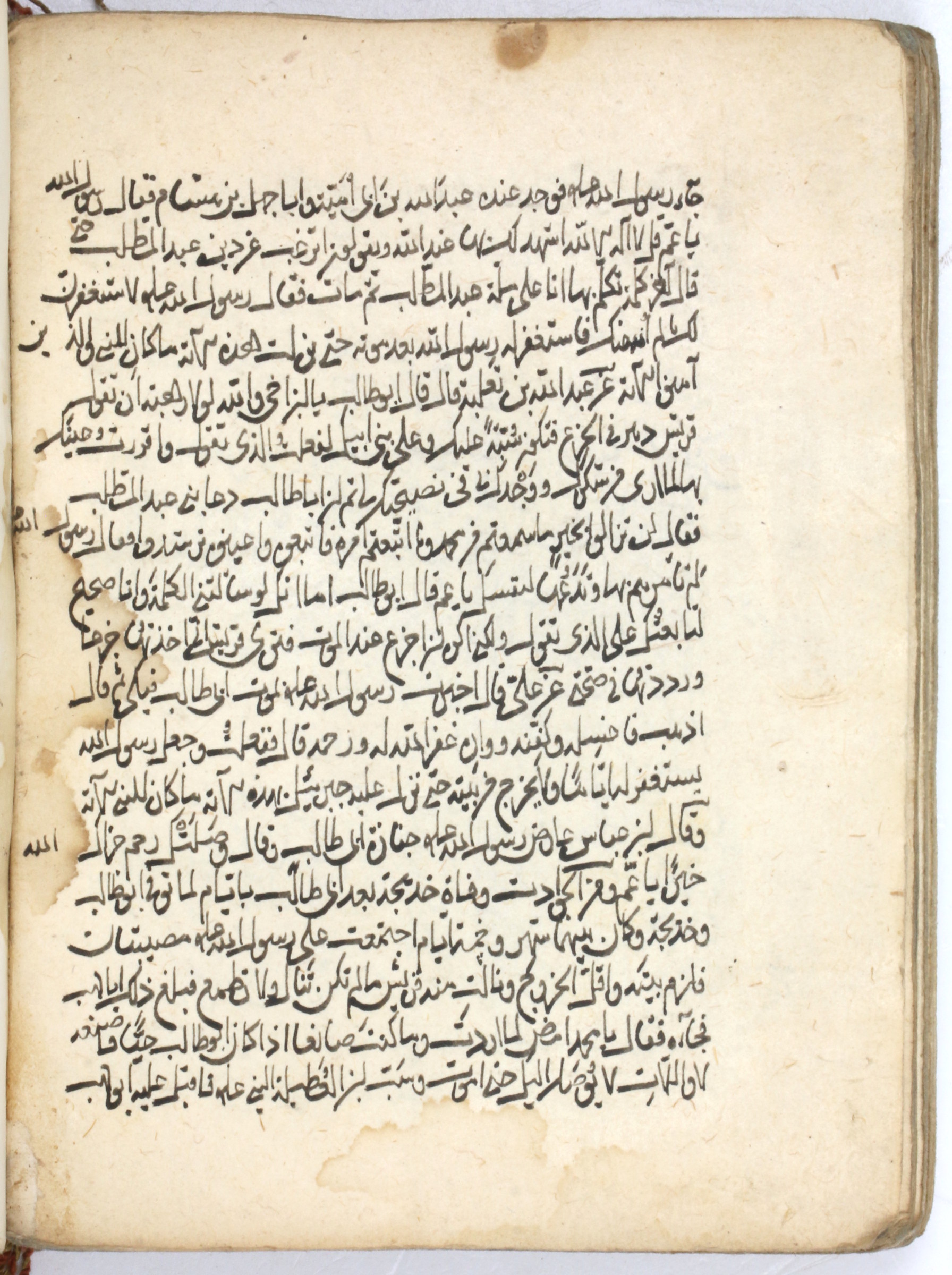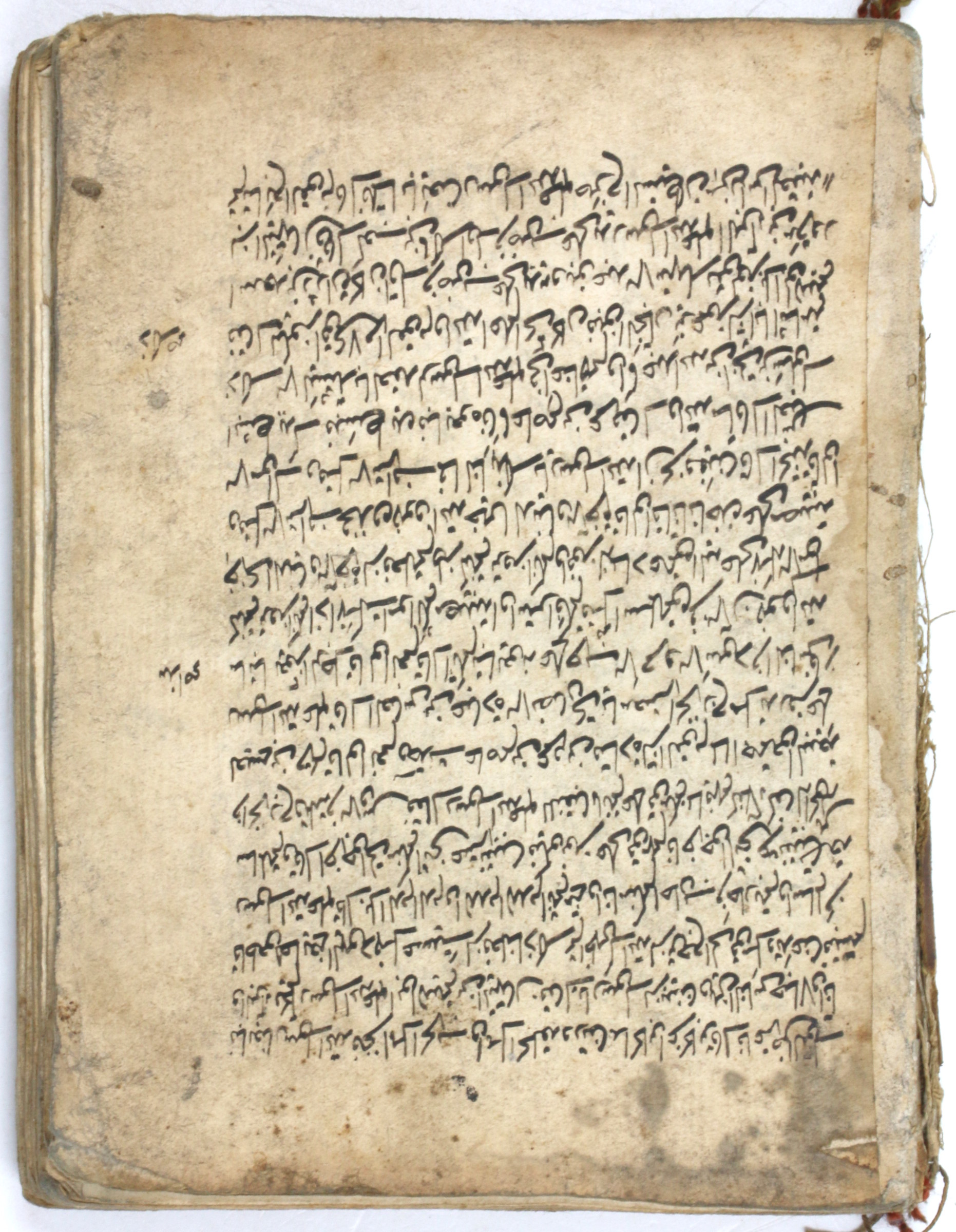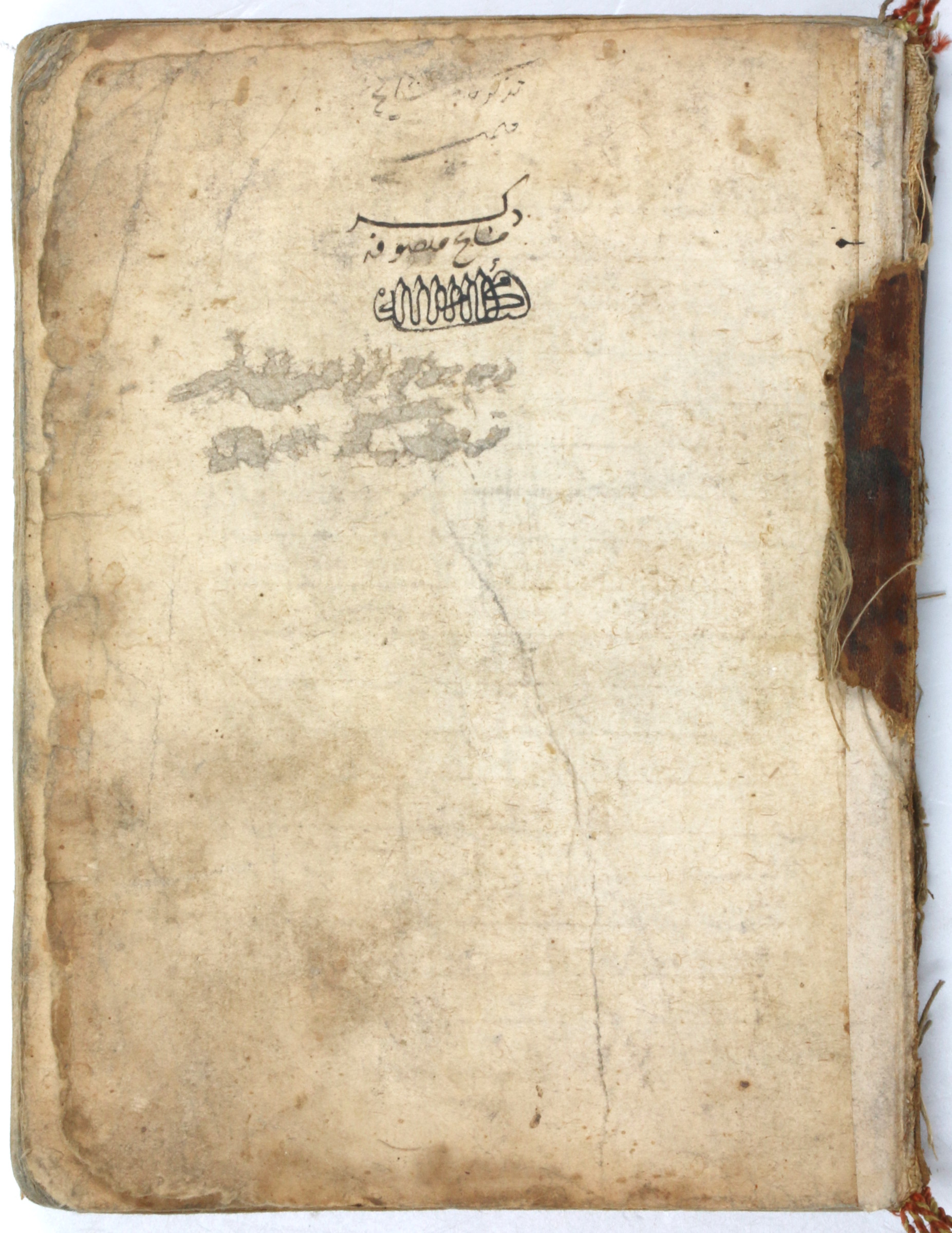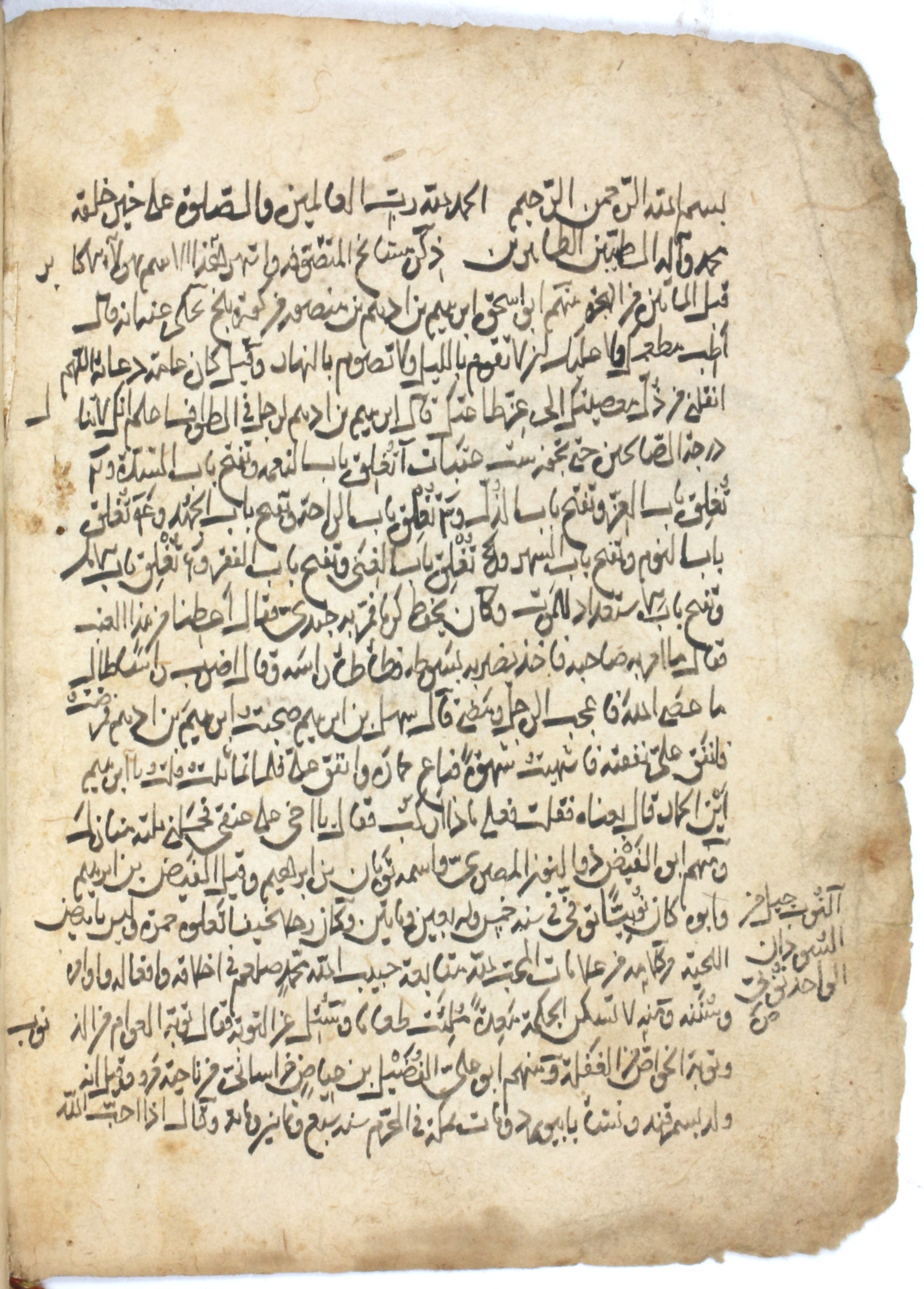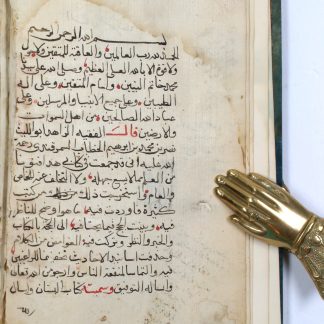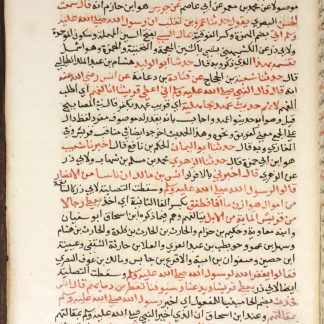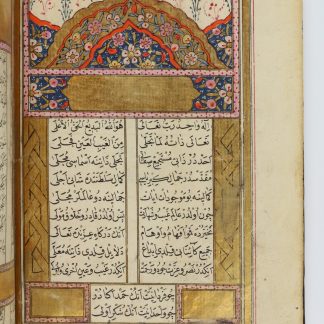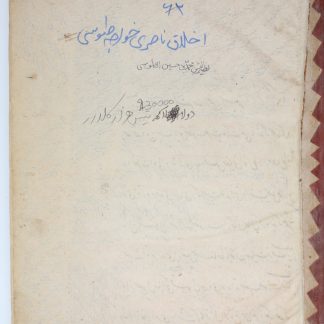One of the first mystics of Islam
[A treatise on the Sufi mystic Ibrahim bin Adham al-Balkhi].
8vo (131 x 170 mm). 102 ff.; incomplete at end. Arabic manuscript on paper. Black naskh script in 19 lines. Without binding.
$5,559.00
An anonymous treatise on (or perhaps attributed to) the 8th century Sufi mystic Ibrahim bin Adham al-Balkhi (d. ca. 778 CE), a semi-legendary figure of Eastern Iran who was among the first leaders of Sufi asceticism. The preface of the manuscript names Ibn Adham and his famous teacher, Abu 'Ali al-Fudayl bin 'Iyad al-Khurasani (d. ca. 802 CE), and expounds on Sufi themes.
Ibn Adham was, per legend, a nobleman or even a prince from the ancient city of Balkh, in what is now Afghanistan. While Balkh was indeed his hometown, stories of his life are often apocryphal; the story that he abdicated from the rule of Balkh to become an ascetic likely came from al-Sulami (d. 1021 CE), and due to proximity to the Indian subcontinent and Balkh's history of ancient Buddhism, this story is occasionally compared in modern scholarship to the calling of the Buddha, who was similarly a young prince who chose to enter an ascetic life. However, al-Balkhi's story is one oriented firmly towards the Muslim and especially Sufi world of West Asia, where he became an influential teacher of the faith, and one of the first mystics of Islam. Even the location of his tomb is much debated: "his tomb is said to be in Tyre, in Baghdad, in Damascus, in 'the city of Lot' (= Kafr Barik), in the Cave of Jeremiah near Jerusalem and finally and most persistently of all, in Djabala on the Syrian coast" (Russell). What is more certain is that he was born in Khurasan to an Arab family from the Kufa area, from the tribal group Bakr bin Wa'il, and that he was one of the great early Sufi ascetics, who appears as a literary figure in works from the Tazkirat al-Awliya of Attar of Nishapur to Rumi's Masnavi.
1) Galerie R. G. Michel in 1912, thence to Michel Collection (1880-1963). Then by descent. 2) Private collection identified as "P".
Exterior leaves gently soiled, and ending (of unknown length) missing as stated. Good general condition despite the absence of binding.
Russell Jones, "Ibrahim b. Adham", in P. Bearman (ed.), Encyclopaedia of Islam New Edition Online (EI-2 English, Brill, 2012). "Ebrahim b. Adham" in Encyclopaedia Iranica VIII (1997), pp. 62f.

